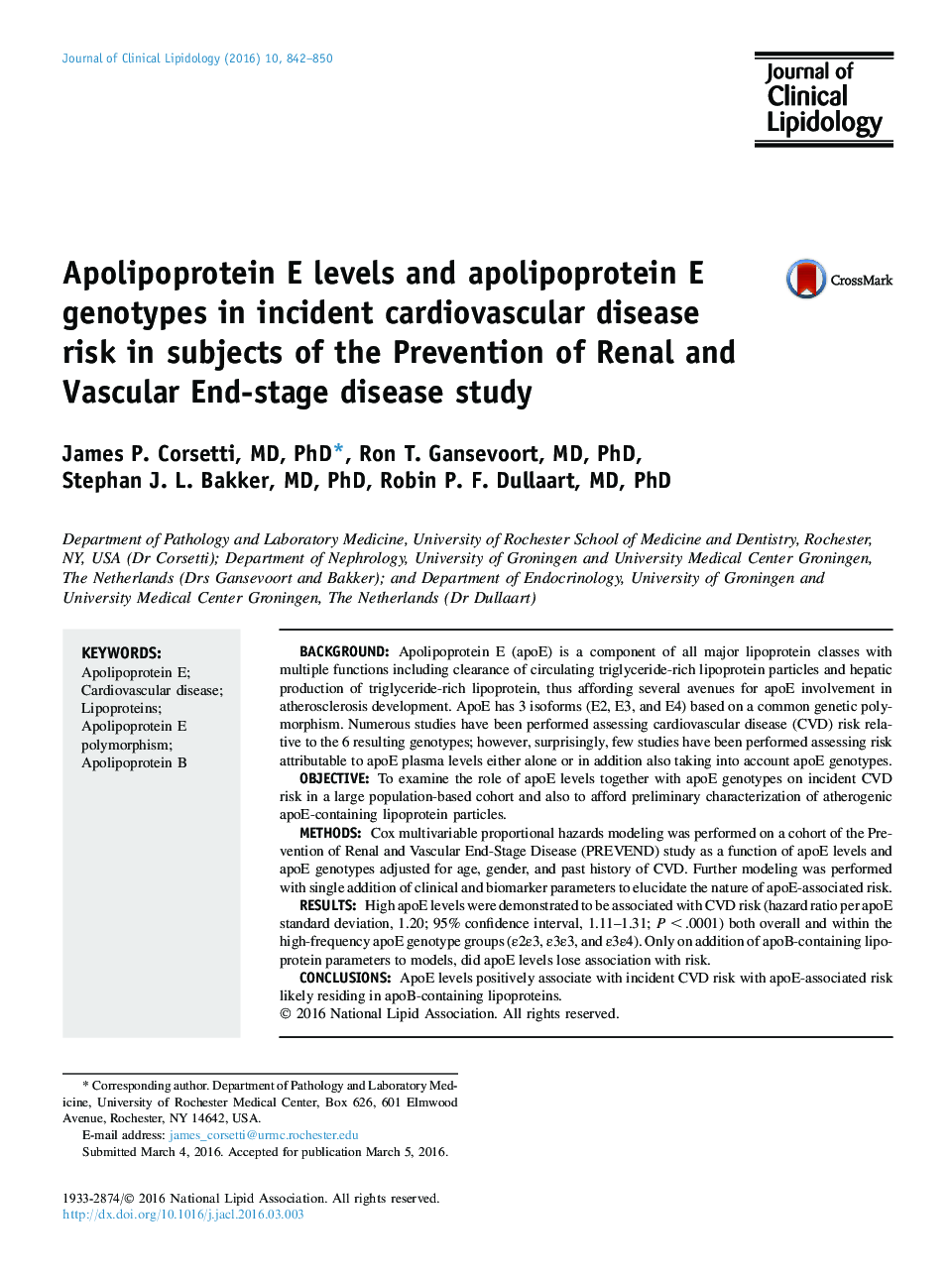| Article ID | Journal | Published Year | Pages | File Type |
|---|---|---|---|---|
| 5615277 | Journal of Clinical Lipidology | 2016 | 9 Pages |
â¢ApoE is a component of all major lipoprotein classes.â¢ApoE has multiple functions in lipoprotein metabolism especially atherogenesis.â¢Many studies are published on apoE genotypes and risk but few on apoE levels and risk.â¢Results demonstrate association of apoE levels on risk independent of apoE genotype.â¢ApoE-associated risk likely derives from apoB lipoproteins enriched with apoE.
BackgroundApolipoprotein E (apoE) is a component of all major lipoprotein classes with multiple functions including clearance of circulating triglyceride-rich lipoprotein particles and hepatic production of triglyceride-rich lipoprotein, thus affording several avenues for apoE involvement in atherosclerosis development. ApoE has 3 isoforms (E2, E3, and E4) based on a common genetic polymorphism. Numerous studies have been performed assessing cardiovascular disease (CVD) risk relative to the 6 resulting genotypes; however, surprisingly, few studies have been performed assessing risk attributable to apoE plasma levels either alone or in addition also taking into account apoE genotypes.ObjectiveTo examine the role of apoE levels together with apoE genotypes on incident CVD risk in a large population-based cohort and also to afford preliminary characterization of atherogenic apoE-containing lipoprotein particles.MethodsCox multivariable proportional hazards modeling was performed on a cohort of the Prevention of Renal and Vascular End-Stage Disease (PREVEND) study as a function of apoE levels and apoE genotypes adjusted for age, gender, and past history of CVD. Further modeling was performed with single addition of clinical and biomarker parameters to elucidate the nature of apoE-associated risk.ResultsHigh apoE levels were demonstrated to be associated with CVD risk (hazard ratio per apoE standard deviation, 1.20; 95% confidence interval, 1.11-1.31; P < .0001) both overall and within the high-frequency apoE genotype groups (ε2ε3, ε3ε3, and ε3ε4). Only on addition of apoB-containing lipoprotein parameters to models, did apoE levels lose association with risk.ConclusionsApoE levels positively associate with incident CVD risk with apoE-associated risk likely residing in apoB-containing lipoproteins.
